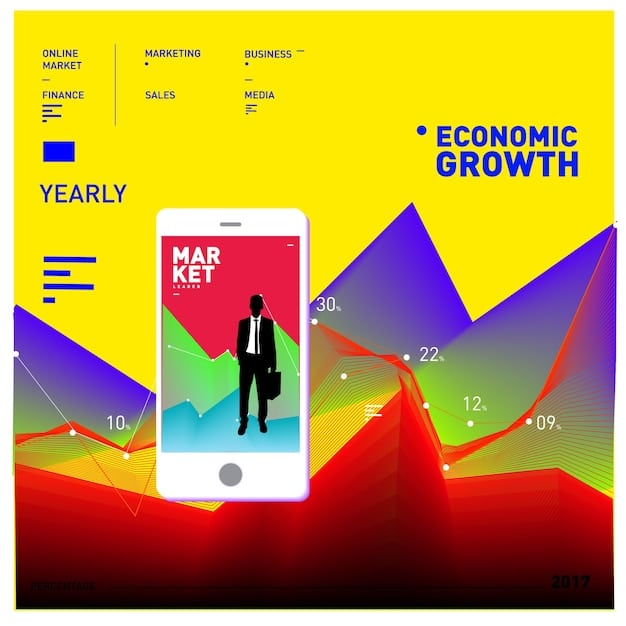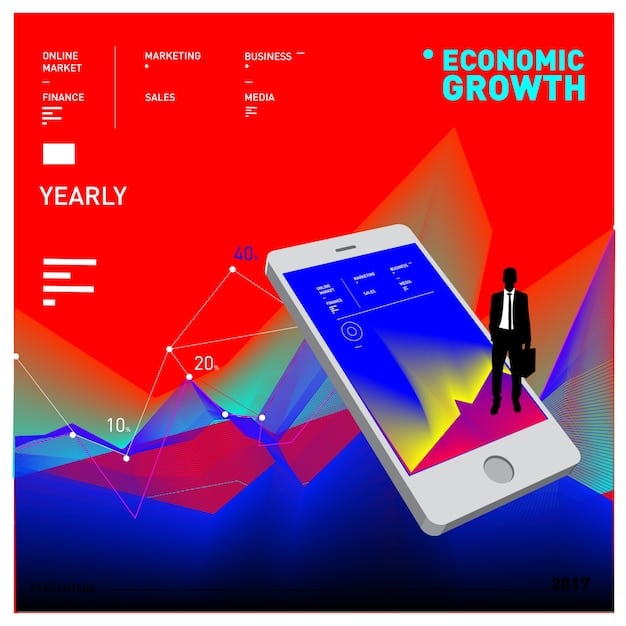Mastering TikTok’s evolving trends and impact

This article explores TikTok’s profound influence on culture, marketing, and communication, delving into how its dynamic trends shape user engagement and offer unique opportunities for content creators and brands alike, while also navigating its evolving landscape.
In an increasingly digital world, few platforms have captured global attention and reshaped online behavior quite like TikTok’s. From viral dances to educational snippets, its short-form video format has become a cultural phenomenon, influencing everything from music charts to consumer trends. Understanding the true scope and impact of TikTok requires a look beyond the ephemeral trends and into the strategic mechanisms that drive its immense popularity and sustained growth.
The evolution of TikTok: From app to global phenomenon
In a relatively short span, TikTok has transformed from a quirky video-sharing app into an undeniable global force. Its trajectory is a compelling case study in digital disruption, demonstrating how a novel approach to content creation and consumption can reshape an entire industry. The platform’s initial appeal lay in its simplicity: offering easy-to-use editing tools and a vast library of sounds that empowered anyone to become a creator, regardless of their technical prowess or prior experience.
The early days saw a flurry of dancing challenges and lip-sync videos, which quickly garnered millions of views and created a new breed of internet celebrities. This user-generated content, coupled with TikTok’s remarkably intuitive algorithm, facilitated rapid virality. Unlike traditional social media platforms that prioritized connections among existing friends, TikTok’s “For You” page focused on content discovery, exposing users to a diverse array of videos tailored to their viewing habits, connecting them with creators they might never have otherwise encountered.

This shift in content distribution proved to be a game-changer, leveling the playing field for new creators and allowing niche communities to flourish. As the platform matured, so did its content. Users began experimenting with diverse formats, from insightful tutorials and compelling storytelling to comedic skits and genuine educational content. This expansion of content types broadened TikTok’s appeal, attracting a wider demographic beyond its initial Gen Z core.
Key milestones in TikTok’s ascent
- 2016 (Douyin Launch): The app first launched in China as Douyin, laying the groundwork for its global expansion.
- 2017 (TikTok Global Launch): ByteDance launched TikTok internationally, recognizing the potential for a short-form video platform worldwide.
- 2018 (Musical.ly Merger): The acquisition and merger with Musical.ly significantly boosted TikTok’s user base in Western markets, consolidating its position.
- 2020-2021 (Pandemic Boom): Global lockdowns accelerated TikTok’s growth, as people sought entertainment and connection while at home.
Now, as we look to 2025 and beyond, TikTok continues to evolve, pushing the boundaries of what a social media platform can be. It consistently introduces new features, adapts to changing user preferences, and responds to global cultural conversations, ensuring its enduring relevance in the ever-shifting digital landscape. Its journey is a testament to agility and innovation, demonstrating how to build and maintain a massive, engaged audience in a competitive market.
Understanding TikTok’s algorithm: The engine of virality
At the heart of TikTok’s unparalleled success lies its sophisticated and often mysterious algorithm. Unlike other platforms that heavily rely on network effects—showing you content from people you follow—TikTok’s “For You” page (FYP) is a meticulously crafted content discovery engine. It prioritizes showing users content they are most likely to engage with, even if it comes from creators they’ve never encountered before. This fundamental difference is what allows unknown creators to go viral overnight, democratizing content creation and distribution on an unprecedented scale.
The algorithm operates based on a multitude of signals, constantly learning and adapting to individual user preferences. It analyzes how users interact with content, tracking metrics such as likes, shares, comments, follows, and, crucially, watch time. If you watch a video to completion, or multiple times, that’s a strong signal of interest. Conversely, if you quickly swipe past a video, the algorithm notes that too, refining its recommendations to avoid similar content in the future. This continuous feedback loop creates a highly personalized and addictive viewing experience.
Beyond direct engagement, the algorithm also considers factors like video information (captions, sounds, hashtags), device settings (language preference, country setting), and even broader trends on the platform. For instance, if a particular sound or challenge is gaining traction, the algorithm might elevate videos using that sound or participating in that challenge, driving further participation and virality. This dynamic interplay between user behavior, content attributes, and trending topics forms the core of TikTok’s powerful recommendation system.
How engagement shapes the FYP
- Watch time: The longer a user watches a video, the more likely similar content will appear.
- Interactions: Likes, comments, shares, and follows signal strong interest to the algorithm.
- Hashtags and Sounds: Using trending elements can increase a video’s discoverability.
- Negative feedback: “Not interested” or swiping away quickly tells the algorithm what to avoid.
The genius of TikTok’s algorithm is its ability to balance personalization with discovery. While it tailors content to individual tastes, it also ensures a constant influx of fresh, diverse videos, preventing content fatigue and keeping users hooked. This balance fosters a dynamic ecosystem where new trends emerge rapidly, creators are incentivized to produce engaging content, and users always find something new to captivate their attention. Understanding this intricate system is key to navigating the platform effectively, whether you are a casual viewer or an aspiring influencer.
Defining TikTok trends: More than just dances
When one mentions TikTok’s trends, the immediate image for many might still be viral dance challenges. While these are undoubtedly a significant part of the platform’s cultural footprint, the reality of TikTok trends in 2025 is far more expansive and nuanced. Trends on TikTok are dynamic, multifaceted phenomena that encompass sounds, visual aesthetics, narrative styles, educational snippets, challenges, and even niche community inside jokes. They are the circulatory system of the platform, driving engagement, fostering community, and shaping collective digital consciousness.
A trend can begin with a single creator’s original idea, a snippet of an obscure song, or a unique way of telling a story. If enough users resonate with it, replicate it, and add their own spin, it can rapidly escalate into a global phenomenon. What makes TikTok’s trends distinct is their participatory nature. It’s not just about passively consuming content; it’s about actively joining in, adapting, and innovating. This low barrier to entry for participation is a major factor in their rapid spread and widespread adoption, encouraging millions to become content creators themselves.
Beyond the playful and entertaining, TikTok trends have evolved to reflect serious social commentary, educational insights, and even professional networking. “EduTok” content, for instance, has seen a massive surge, with experts sharing concise, digestible information on everything from financial literacy to psychological well-being. Similarly, “BookTok” has become a powerful force in the publishing world, driving sales of both new releases and backlist titles by turning books into viral sensations through passionate reviews and recommendations. These demonstrate the platform’s growing maturity and diverse appeal.
Types of trending content on TikTok
- Sound-based trends: Videos centered around a specific audio clip, often featuring unique choreography or comedic scenarios.
- Challenge trends: Users participate in a specific action or routine, often with a unique hashtag, encouraging replication.
- Niche community trends: Inside jokes or formats specific to smaller, dedicated communities (e.g., “CleanTok,” “WitchTok”).
- Educational trends: Experts and enthusiasts sharing bite-sized information on diverse subjects, often using visual aids.
- Narrative/storytelling trends: Users sharing personal anecdotes, often set to a specific emotional sound or visual style.
The ephemeral nature of trends is also a defining characteristic. They emerge quickly, reach peak popularity, and then fade as new trends take their place. This constant churn keeps the platform fresh and exciting, but also means creators and marketers must stay perpetually tuned in to the ever-shifting landscape. Understanding the anatomy of a TikTok trend – from its inception to its peak and eventual decline – is critical for anyone looking to harness its power for personal branding or marketing endeavors.
The impact of TikTok on culture and commerce
The pervasive influence of TikTok’s extends far beyond individual screens, permeating culture and commerce on a global scale. Its ability to rapidly disseminate information, memes, and trends has fundamentally reshaped how industries operate, from music and fashion to advertising and traditional media. Nowhere is this more evident than in the music industry. A short snippet of a song going viral on TikTok can propel an artist from obscurity to global stardom overnight, driving streams on other platforms and even reviving older songs to chart-topping status years after their original release.
In fashion, TikTok has become a powerful trend incubator. Micro-trends like “dark academia” or “coastal grandmother” emerge organically from user-generated content, influencing not only what people wear but also how brands design and market their collections. This bottom-up approach to trendsetting challenges traditional fashion cycles, giving ordinary users unprecedented power to dictate what’s “in.” Brands are now scrambling to keep up, often partnering with TikTok creators to tap into these authentic, community-driven movements.
Advertising and marketing have also undergone a seismic shift. Traditional, highly polished ad campaigns often fall flat on TikTok, where authenticity and relatability reign supreme. Brands that succeed understand that they need to integrate seamlessly into the platform’s native content style, often by embracing humor, leveraging trending sounds, or collaborating with creators who genuinely resonate with their audience. This approach blurs the lines between entertainment and advertisement, making marketing feel less intrusive and more organic.
Sectors transformed by TikTok
- Music industry: TikTok serves as a primary discovery platform, driving song streams and artist popularity.
- Fashion & Beauty: Micro-trends emerge, influencing consumer choices and brand strategies.
- Retail & E-commerce: Viral products lead to immediate sales spikes, often selling out within hours.
- Food & Beverage: Recipes, food hacks, and eatery reviews drive dining choices and product consumption.
- Traditional Media: TV shows and movies create TikTok content to promote, often adapting scenes for short-form clips.
Beyond specific industries, TikTok has also left an indelible mark on communication itself. It has popularized a short-form, attention-grabbing narrative style that has influenced everything from news reporting to educational content. Its emphasis on authentic, raw content challenges the perfectly curated aesthetics of older platforms, promoting a more genuine and relatable form of self-expression. In essence, TikTok is not just a platform; it’s a cultural catalyst, constantly shaping behavior, driving consumption, and redefining the very nature of digital interaction in the modern age.
Navigating monetization and brand partnerships on TikTok
For many creators, TikTok’s offers more than just fame; it presents concrete opportunities for monetization and career building. As the platform matured, so did its avenues for creators to earn a living, transitioning from mere hobbyists to full-time professionals. Brand partnerships stand out as one of the most lucrative and common methods. Companies are increasingly recognizing the unparalleled reach and authentic engagement that TikTok influencers can provide, leading to collaborations that range from sponsored content to long-term ambassadorships.
When approaching brand deals, authenticity is paramount. Audiences on TikTok are highly attuned to inauthentic content, and a partnership that doesn’t genuinely align with a creator’s brand or audience can backfire. Successful collaborations often involve creators integrating products or messaging into their characteristic content style, making the advertisement feel organic and engaging rather than forced. This requires a strong understanding of both personal brand and audience demographics, allowing creators to select partnerships that resonate genuinely.
Beyond traditional brand deals, TikTok has introduced various native monetization features. The Creator Fund, while debated for its payout structure, offers a baseline income for eligible creators based on views and engagement. Live Gifts allow viewers to send virtual gifts during live streams, which can be converted to real money. More recently, TikTok Shop has emerged as a significant e-commerce venture, allowing creators to directly sell products within their videos and live streams, blurring the lines between content creation and online retail. This creates a direct pipeline from discovery to purchase, benefiting both creators and brands alike.
Monetization avenues for TikTok creators
- Brand Collaborations: Sponsored posts, dedicated content, and long-term ambassadorships.
- TikTok Creator Fund: Payments based on video views and engagement for eligible accounts.
- Live Gifts & Tips: Viewers purchase virtual gifts during live streams to support creators.
- TikTok Shop: Direct sales of products through integrated e-commerce features in videos and live streams.
- Affiliate Marketing: Earning commission by promoting products with trackable links.
Navigating the complex landscape of TikTok monetization requires a strategic approach. Creators must understand their audience, consistently produce high-quality content, and actively seek out opportunities. For brands, the key is to collaborate with creators whose values and audience align with their own, fostering authentic connections that lead to genuine engagement and conversions. As TikTok continues to innovate its commercial offerings, the platform will undoubtedly remain a vital space for creators and marketers alike to connect, influence, and generate revenue.
Future of TikTok: Innovation, challenges, and global strategy
Looking ahead, the future of TikTok’s is shaped by a confluence of rapid innovation, evolving user behaviors, and significant geopolitical and competitive challenges. The platform has consistently demonstrated its agility in adapting to new trends and user demands, hinting at an ongoing commitment to expanding its functionalities beyond short-form video. We can anticipate continued developments in live commerce, further integration of AI-powered content creation tools, and potentially deeper dives into augmented reality (AR) experiences, making content even more interactive and immersive.
Innovation, however, is often accompanied by challenges. Data privacy and national security concerns remain a significant hurdle for TikTok, particularly in Western markets. The potential for data access by its Chinese parent company, ByteDance, has led to calls for bans and stringent regulations in several countries. Navigating these regulatory landscapes while maintaining user trust will be crucial for TikTok’s long-term sustainability and global expansion. Addressing these concernsTransparently and decisively will be paramount for its continued success.
The competitive landscape is also tightening. Major tech giants, having seen TikTok’s success, have launched their own short-form video features, such as Instagram Reels and YouTube Shorts. While TikTok still holds a formidable lead in terms of engagement and trend origination, these competitors are constantly refining their offerings, vying for creators and audience attention. This intense competition will push TikTok to continuously innovate, ensuring it stays ahead of the curve and retains its unique appeal.

Globally, TikTok’s strategy will likely involve diversifying its revenue streams, fostering richer creator ecosystems, and strengthening its local content production in diverse markets. As it moves beyond viral entertainment, embracing more substantive categories like education and long-form video, its role in the global digital economy will only amplify. The platform’s ability to balance rapid feature development with responsible data governance, while fending off competition, will determine its trajectory as a dominant force in the coming years. Its future promises to be as dynamic and unpredictable as its past.
| Key Aspect | Brief Description |
|---|---|
| 🚀 Viral Growth | Transformed social media with short-form video, rapidly becoming a global cultural force. |
| ⚙️ Algorithm Power | FYP’s personalized content discovery drives unparalleled engagement and virality for creators. |
| 💰 Monetization Options | Offers diverse revenue streams for creators, including brand deals and in-app purchases. |
| 🌍 Cultural Impact | Shapes trends in music, fashion, and marketing, influencing industries and daily life. |
Frequently asked questions about TikTok
TikTok’s algorithm analyzes your interactions, such as likes, shares, comments, and especially watch time, to tailor your “For You” page. It also considers video information like captions and sounds, and device settings, continuously refining recommendations to show content it believes you’ll engage with most, even from new creators.
Creators on TikTok can monetize through various methods. These include participating in brand collaborations and sponsored content, earning from the TikTok Creator Fund based on views, receiving virtual gifts during live streams, and directly selling products via integrated features like TikTok Shop. Affiliate marketing is also a growing avenue.
TikTok trends have evolved significantly beyond just dance challenges. Popular trend types now include sound-based videos, narrative storytelling, educational snippets (EduTok), niche community-specific content, and various ‘challenges’ that involve specific actions or creative interpretations. These diverse formats cater to an ever-widening audience base on the platform.
TikTok has profoundly impacted industries like music and fashion. In music, a viral TikTok sound can propel a song to global charts, boosting streams and artist careers. For fashion, TikTok generates micro-trends organically from user content, influencing consumer buying habits and forcing brands to adapt their marketing and design strategies to align with these fast-moving phenomena.
TikTok faces several critical challenges globally. Primary among these are data privacy and national security concerns, particularly regarding its ownership by a Chinese company. Intense competition from other social media platforms also pushes TikTok to constantly innovate. Successfully navigating these regulatory hurdles and competitive pressures while maintaining its relevance will shape its future trajectory.
Conclusion
In conclusion, TikTok has established itself as more than just a fleeting digital fad; it is a profound force that continues to reshape the landscapes of culture, commerce, and communication. Its meticulously engineered algorithm, dynamic trend cycles, and accessible content creation tools have created a unique ecosystem where virality is democratized and trends emerge at lightning speed. From influencing music charts and consumer behavior to providing new avenues for creator monetization, TikTok’s impact is undeniable and far-reaching. As it navigates future innovations, competitive pressures, and regulatory scrutiny, its adaptability will be key to maintaining its unprecedented global influence. Understanding TikTok is not merely about keeping up with the latest viral video, but about grasping a fundamental shift in how digital content is created, consumed, and experienced in the modern era.





